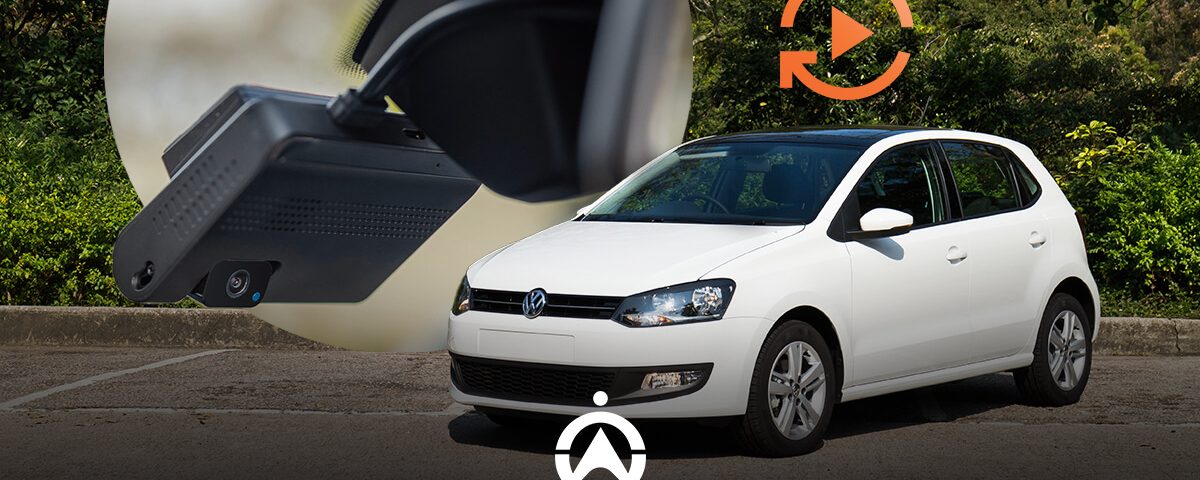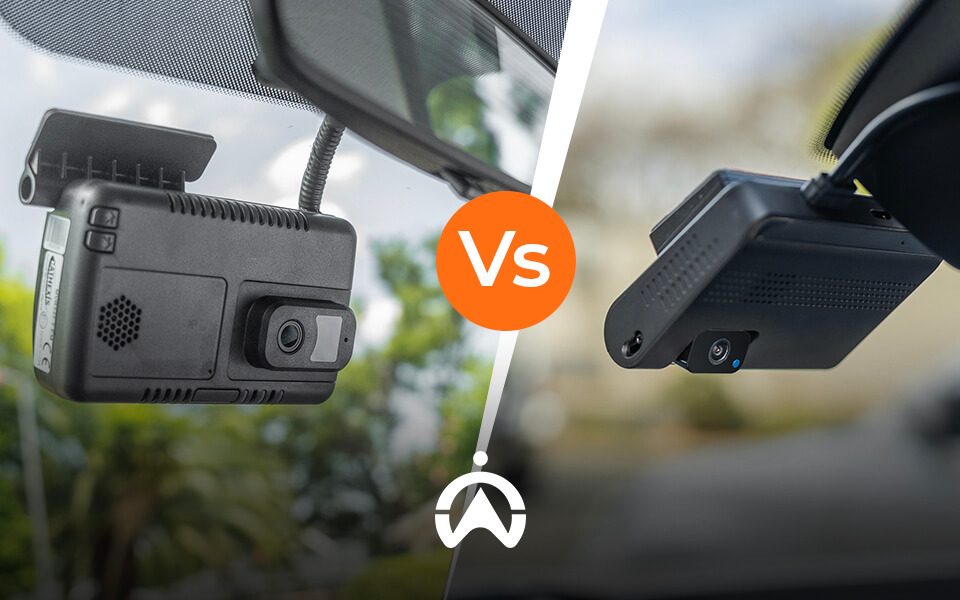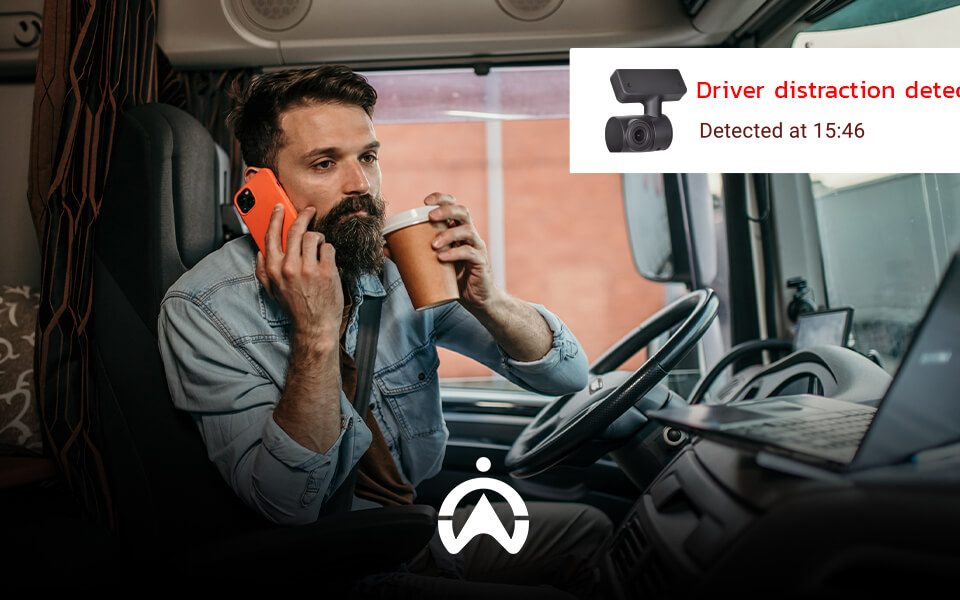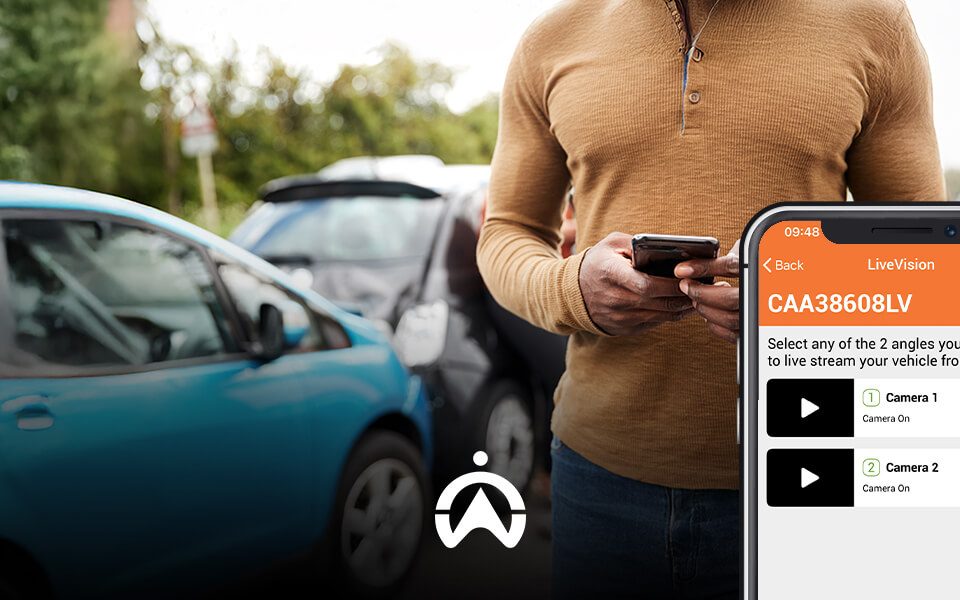Does a Dashcam Record When the Car Is Off?
No, most dashcams turn off with the ignition, so they stop recording once the car is off. But some advanced units have systems that can detect movement or impact and will record even when the car is off. This means it’s possible to get more security for your car when it’s most vulnerable.
Cartrack’s dashcam solutions give you the peace of mind you need. While our cameras don’t record continuously when the vehicle is off — typically for only up to five minutes — they remain in standby mode for up to two hours after the ignition is switched off. During this time, you can access your mobile app and switch the camera on to livestream, so you know your car is still protected while parked. You can also request footage if necessary.
Can dashcams keep recording when your car is off?
Although most dashcams don’t record unless the car is in motion, yes, some dashcams with advanced features can keep recording when your car is off. These features essentially draw on motion or G-sensors (gravity sensors) to capture triggering events, like motion or collision. Captured events make sure your car is extra protected, even when you’re away from it.
Keep in mind that there are some limitations. Dashcam recording while the car is off relies on the power of your car battery, putting a drain on it. This means that recording is limited by power and storage capacity.
How do dashcams work when the car is on?
When the car is on, dashcams work by either recording continuously while driving or recording only when triggered by an event, such as motion or collision.
Here’s a bit more about how dashcams work:
- Power source: Dashcam systems are usually connected to the car through hardwiring, though there are portable wireless options too. Hardwired systems are directly connected to the car and its battery, or connected via the 12V socket. The 12V socket is also known as the cigarette lighter or auxiliary power socket.
- Storage: Footage is stored on SD or SSD cards. SD stands for Secure Digital, which is the standard memory card type. SSD stands for Solid-State Drive, which is a larger and faster memory card. Some dashcams support cloud storage as well.
How long does a dashcam record when the car is off?
The amount of time your dashcam can record when the car is off depends on a few factors that include battery capacity, storage limits, and the dashcam type.
Let’s break this down:
- Battery capacity: Portable dashcams with internal batteries won’t last as long as hardwired systems, which can record for far longer.
- Storage limits: SD or SSD card capacity typically won’t have as much space as cloud storage. The amount of space dictates how much footage can be stored before it’s overwritten. Cartrack’s camera footage is stored on the SSD/SD card; only manually requested footage is stored on the cloud.
- Type of dashcam: Standard dashcams have shorter recording times or are typically event-triggered devices. While some professional cameras or MDVR (mobile digital video recorder) solutions are designed for long-term recording, Cartrack solutions prioritise efficiency and safety, with cameras remaining online for up to two hours after the ignition is off.
Cartrack dashcam solutions strike a perfect balance between strong protection and powerful efficiency. Storage space—and therefore recording time—differs depending on the camera system, but you can rest assured that key incidents will be captured.
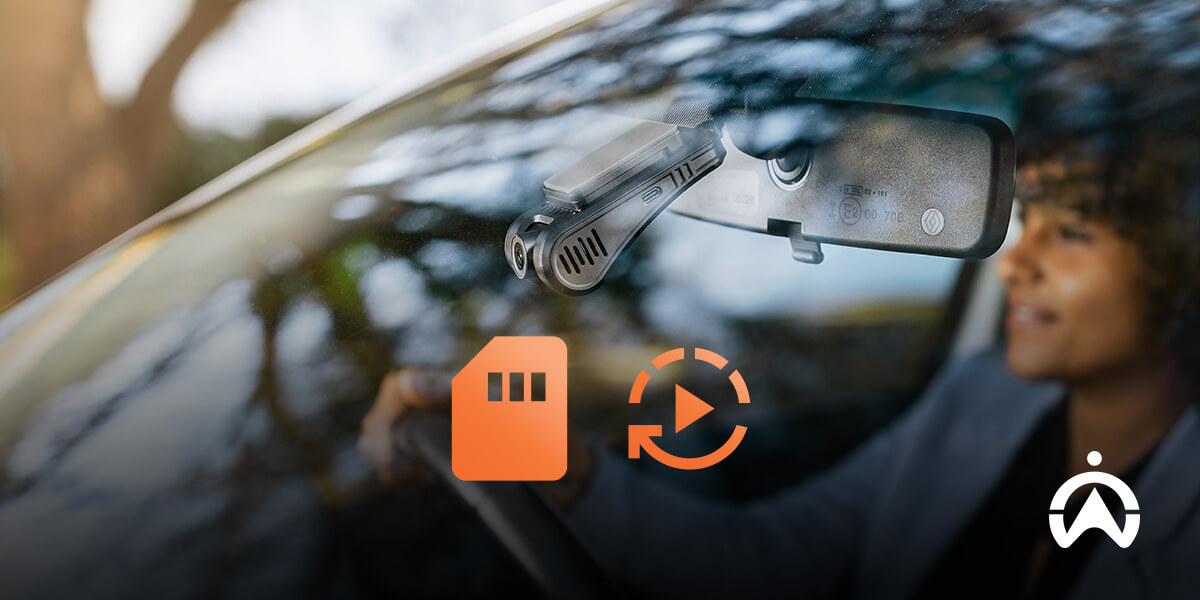
Dashcam features that enable recording while parked
Dashcam features that enable recording while parked include motion detection, impact sensing, battery power, and recording and storage management. These features are designed to work hand in hand to keep your car as protected as possible, especially when you don’t have eyes on it.
Take a closer look at each of the features:
- Motion detection: This is when your dashcam automatically starts recording when movement is detected near the car. Motion detection can catch any criminal and theft attempts on your car, or even small bumps in the parking lot.
- Impact detection/G-sensor: This is when the G-sensor is triggered by a collision or rough impact. The camera records automatically once that event has been detected.
- Battery pack or hardwiring: Keeping a camera running can drain your car battery. External power options can help prevent car battery drain, although this option is far more niche. Hardwired options are a little more common. Standard or entry-level dashcams typically switch off with the ignition.
- Loop recording and storage management: Dashcams will usually overwrite the oldest footage when the storage gets full. This is how your dashcam continuously records without losing footage or having you delete footage manually.
At Cartrack, we don’t use external battery packs. Instead, we provide transparent safety measures, like the Power Extension Form, so you know exactly how extended recording could impact your vehicle’s battery.
Dashcam battery drain explained: What happens when your car is off?
When your car is off and the dashcam is recording, it drains your car battery. Your dashcam relies on your car’s battery for power, so if it runs too long, it can eventually weaken it. However, most modern dashcams do have some safety features in place to ensure your battery isn’t compromised.
These are some general safety features you might expect from advanced camera solutions:
- Hardwired options: This dashcam connection links directly to your fuse box. It typically switches the dashcam off as a safety precaution if the voltage becomes too low.
- External battery packs: This connection type is still quite niche, but it is slowly making its way into the market. This is a completely separate power source that doesn’t rely on your car battery.
- Low-voltage warnings: This is one of the more common safety precautions. This measure ensures that your dashcam is switched off before the integrity of your car battery is compromised or so drained that your car won’t start.
Our Cartrack tip? Always make sure your dashcam is installed by a professional to avoid any damage to your car’s battery. Partner with a provider that’s clear and transparent about battery drainage and any other potential effects a dashcam may have. At Cartrack, we have the Power Extension Form, which ensures you’re fully aware of how extended recording may affect your vehicle’s battery.
How to choose the right dashcam for consistent recording
To choose the right dashcam for consistent recording, consider a few key factors to look out for:
- Resolution
- Smart features
- Battery solution and
- Storage type
Always remember that it’s more than just the brand or price. Getting the right mix of features is the key to achieving absolute protection for your car.
Here’s a little more on each of these key factors:
Resolution
A higher resolution means that events are captured in crisp video quality. This is important for key details in potential accidents or insurance matters, like clearly capturing number plates. Keep in mind, though, the best quality is usually from saved, recorded footage; livestreamed footage will typically be lower quality.
Smart features
See if the camera solution has any motion detection or AI features. If available for personal vehicles, they can be great add-ons that provide extra security.
Battery
Understand what the camera solution uses as a power source. Ask your potential provider what safety precautions are in place for your car battery and how they’re willing to help you in this regard.
Storage type
Find out what type of storage your provider offers with their dashcam solution. You’ll typically have to choose between an SD card, an SSD card, and/or cloud storage.
Why consider Cartrack as your provider choice? Cartrack has a dashcam solution for every kind of driver. Some of our dashcam solutions allow for recording when the car is off, with up to 2 hours of standby and livestreaming protection.
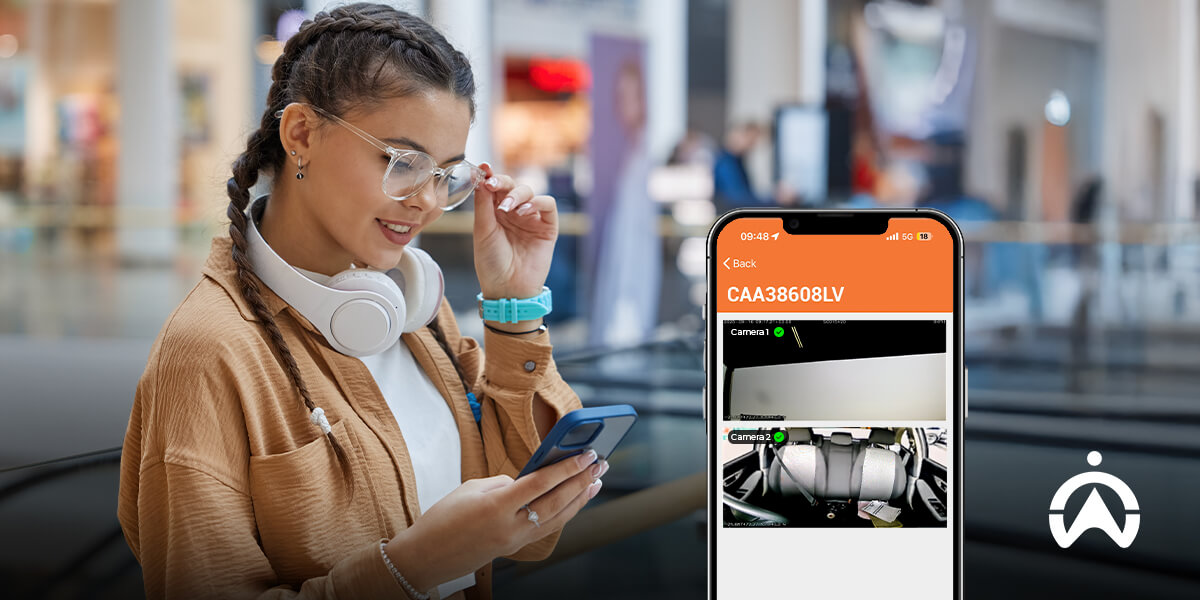
Why Cartrack is the top choice for overall dashcam protection
With Cartrack, you and your car remain protected at all times—whether you’re on the road or in the parking lot. Our dashcams are built to tend to your unique needs and record all the crucial events, meaning that you can have peace of mind even when you’re not around.
After the ignition is switched off, the cameras will continue to record footage for five minutes. All cameras are online (in standby mode) for two hours after the ignition is off to enable you to request footage and livestream. Remember, this isn’t two hours of continuous automatic recording — it’s availability for requests or streaming.
Manually requested trip footage is uploaded to the cloud once the car is back on. This is the only footage stored on the cloud, and it’s accessible to you via the mobile app.
If you’d like the camera to continue recording for longer than five minutes, you can request this. To remain transparent and effectively manage battery strain, we have a Power Extension Form. This acknowledges that you’re aware that extending the duration will drain the vehicle’s battery.
Trusted by individuals and businesses alike, you can turn to Cartrack for your complete safety and security.
Keep your vehicle protected with Cartrack
A good dashcam can keep recording even when your car’s off, giving you extra peace of mind while it’s parked. Cartrack’s smart dashcams bring together advanced detection, reliable and extended protection, and professional installation, so it’s easy to keep your car safe.
Don’t leave your car unprotected. Explore Cartrack’s range of smart dashcams today and experience premium security at your fingertips. Contact us to check out our dashcam solutions.
FAQs
Q: Do dashcams record conversations when parked?
A: Most dashcams don’t record conversations when parked, although a few models do capture audio. Typically, dashcams will only record audio when the car is in motion. If this feature is important to you, check with your provider to see if those specifications are offered. Cartrack dashcams are designed to focus on video for your security rather than audio recording.
Q: Can a dashcam damage the car battery if used for 24-hour recording?
A: Yes, a dashcam can damage the car battery if used for 24-hour recording, though it’s usually only the case if there are no precautionary measures in place. Some providers might offer external power sources or use a hardwiring kit, but typically, low-voltage measures are there to prevent battery compromise.
Q: How do I know if my dashcam is recording when parked?
A: You know that your dashcam is recording when parked if there’s a blinking/on light or notification via the connected mobile app. On the other hand, you can look for motion alert notifications that’ll let you know your camera is working.
Q: Are there dashcams that work for long-term parking security?
A: Yes, some dashcams work for long-term parking security, and these are dashcams that offer what’s usually referred to as ‘parking mode’. Cars that require long-term surveillance use a hardwiring kit to connect to your car’s fuse box. This lets them draw power safely and prevents the battery from draining too much, thanks to built-in voltage cut-off protection.

